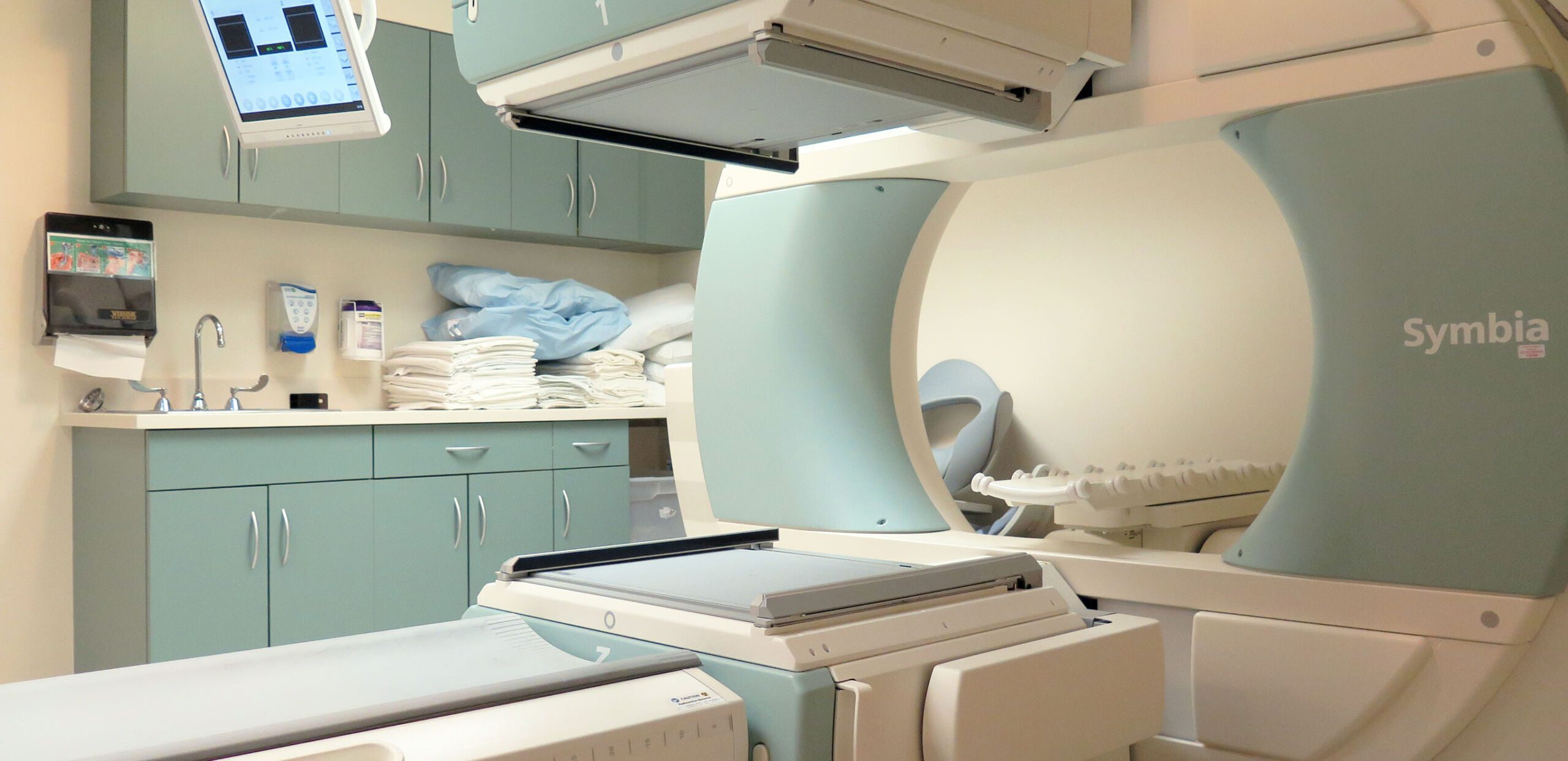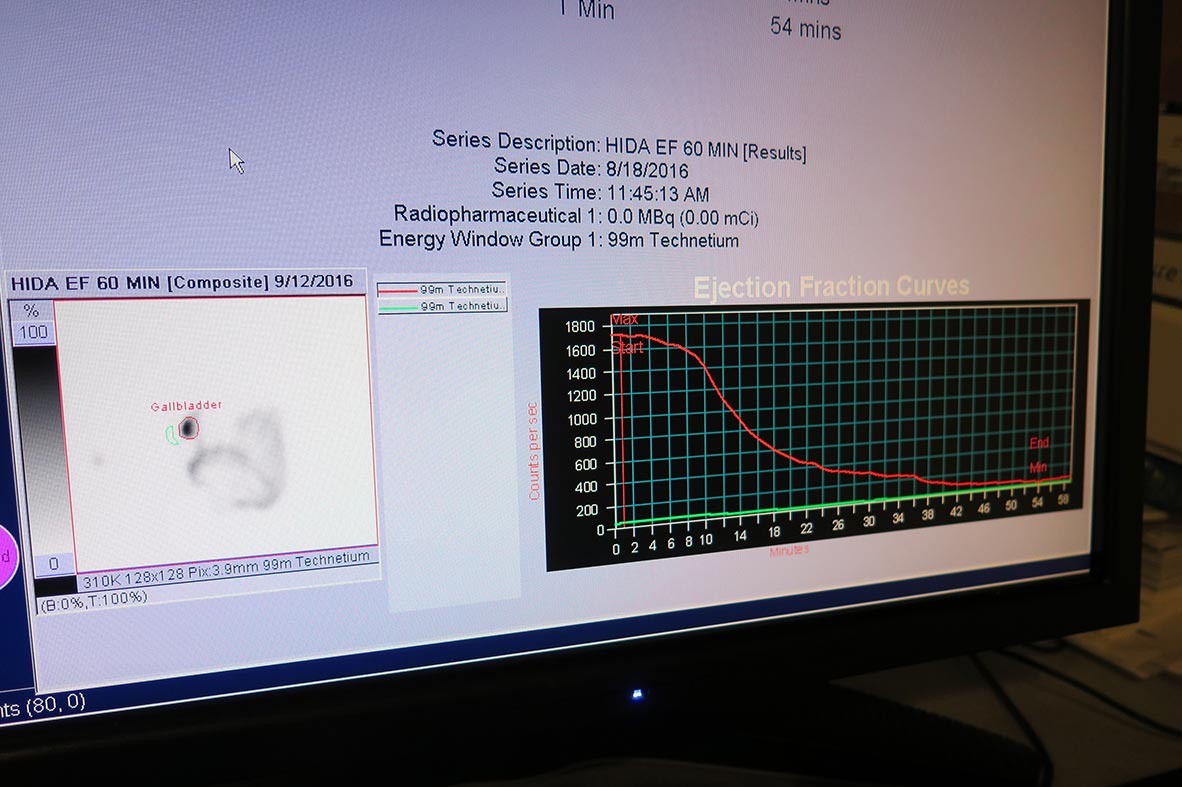Nuclear Medicine Imaging
What is Nuclear Medicine?
Nuclear Medicine imaging is unique. It provides doctors with information about both the structure and the function of body organs. Unlike a diagnostic X-ray, where radiation is passed through the body, Nuclear Medicine tracers (radiopharmaceuticals) are taken internally by injection into an arm vein, by swallowing or inhalation. Radiopharmaceuticals are substances that are absorbed by specific organs, bones or tissues so that they may be imaged. In Nuclear Medicine imaging, these radiopharmaceuticals are detected by special types of cameras that work with computers to provide pictures and information about the structure and function of the body area being imaged.
Nuclear Medicine Treatments
In addition to their use in medical imaging, sometimes radioisotopes are used therapeutically in the treatment of hyperthyroidism, Graves Disease and thyroid cancer.
The amount of radiation in a typical Nuclear Medicine imaging procedure is comparable to that received during a diagnostic X-ray or CT scan, and the amount received in a typical treatment procedure is kept within safe limits. Most Nuclear Medicine procedures expose patients to about the same amount of radiation as they receive in a few months from natural radiation in the environment.



